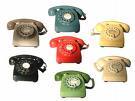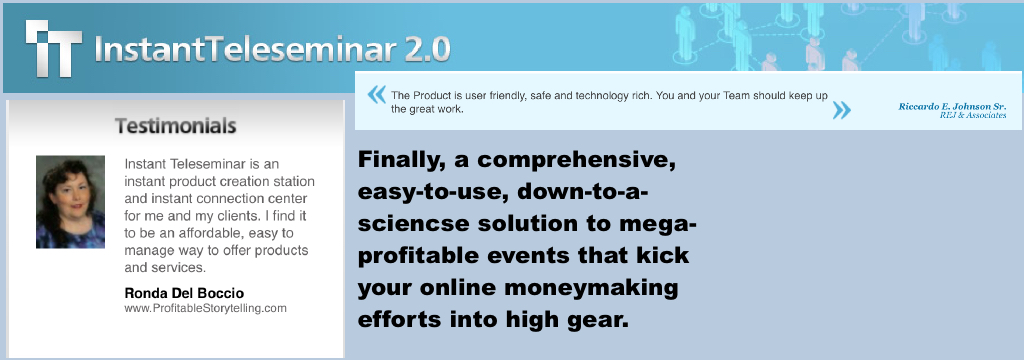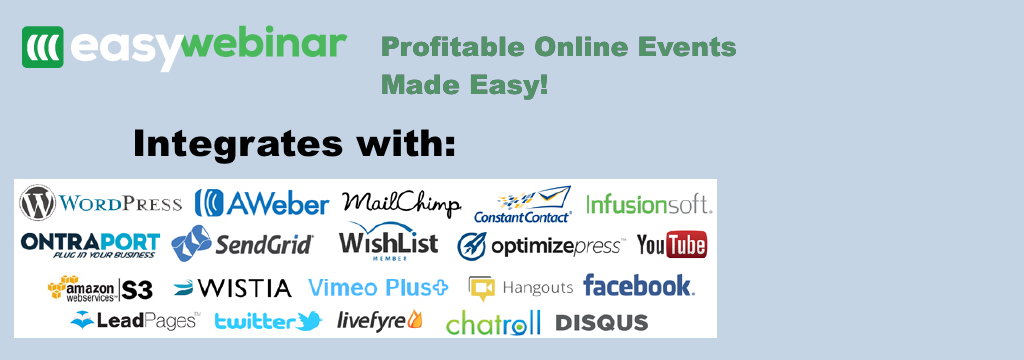Teleseminars can be used for a number of different things from marketing to lead generation, to generating revenue. Each use requires a different strategy and pricing model. Some teleseminars can be high ticket events and others are just enough to cover the costs. Read on for more on when to use which model.
“Should I charge more for those who attend my live seminar than those who buy the recording?”
The answer depends on your primary purpose for presenting teleseminars. Here are two pricing models I strongly recommend, each for a different situation.
Pricing Model #1 works well when you are publicizing your seminar beyond your own list, where you hope to entice new people to opt-in so you can sell them on a certain product, service or paid event.
Offer the live teleseminar at no charge, with a nominal charge (such as $20) for the MP3 or CD recording. This encourages those who can to attend the live session, while it also gives you access to those who cannot attend. You need the live attendees so you have informational exchanges during the seminar, avoiding the monotony of a lecture.
People exposed to your knowledge and personality for an entire hour, either on the phone or on their audio player, then feel they know you and become receptive to a related follow-up offer.
I have used this model successfully numerous times as a lead generator for my copywriting mentoring program. The $20 charge for the recording usually brought in a few hundred dollars, and it may have also increased the perceived value of the live session for those who called in at no charge.
Colleagues of mine successfully use this model for a teleconference with numerous sessions or a longish series of related sessions. Attendance at the live calls costs nothing, but you can buy recordings of all the sessions for a fee like $97. As with the single-session arrangement, the free option generates good will among attendees while the paid option generates income that makes the effort financially worthwhile.
Use Pricing Model #2 when you have something new and valuable for those who have already opted in to your list.
Here, charge a single price for your content (such as $37 or $49) whether people attend live or listen to the recording. For the one price, your buyers get both access to the live session and the recording.
In this case, buyers are not in “get to know you” mode but rather are primed to learn. Your session provides a substantive educational event on a specialized topic. You go into your subject matter in more depth than you would with Pricing Model #1.
I used Model #2 in November 2009 when I interviewed a business attorney on what marketers should do about new Federal Trade Commission regulations that were about to go into effect the next month. This was information some people on my list were strongly motivated to learn about.
When I run a multi-session teleseminar course, I use this model as well, emphasizing to registrants that it doesn’t matter whether or not they can fit the live sessions into their schedule. Within a day after each class, they receive the download address for its audio, and at the conclusion of the course, they receive all the recordings bound in a CD album they can keep on their shelf for future reference. This arrangement raises the perceived value of the course while eliminating objections based on scheduling or time available.
Veteran teleseminar presenter Marcia Yudkin specializes in high-ticket, high-value teleteaching courses. To find out more about your teleseminar options, download a complimentary copy of “66 Ways to Use Teleseminars to Promote Your Business or Your Cause” at http://www.yudkin.com/teleteach.htm. Discover how to plan, promote and deliver profitable teleseminars, whether you’re an entrepreneur, business or health professional, nonprofit organization or corporate marketer.
More on Teleseminar Pricing Models:
Raising Perceived Value and Your Teleseminar Price Tag | Client …
(This article is one of the best I’ve seen in terms of talking about how to add more value to your teleseminars. Some excellent tips are mentioned. This one is certainly worth the read!
So along that vein, if you want to build the price tag of your teleseminar (and I’m sure you do), you must increase its perceived value. Consumers naturally think in a “what’s in it for me?†manner. When you create a belief that what …
Publish Date: 05/23/2010
Webinar and Teleseminar Resources
Create Residual Revenue From Your Webinars Tags: Lead generation, paid teleseminars, teleseminar pricing, teleseminar strategy Posted by





